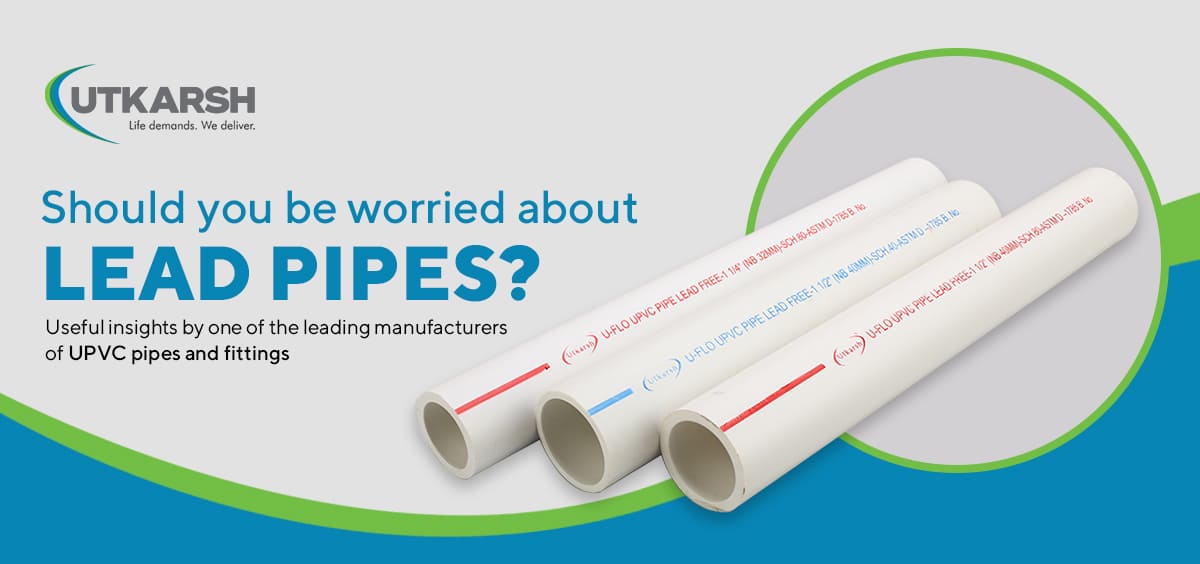Should you be worried about lead pipes? Useful insights by one of the leading manufacturers of UPVC pipes and fittings

1.
Why is lead a
problem?
Lead
is a metal that can be found in paint, air, soil, household dust, food and tap
water. High levels of lead in tap water can cause serious health effects. It
has been found that lead exposure can lead to cognitive impairment in children.
As per UNICEF, almost 800 million children across the world
are affected by lead poisoning. It can
also cause hypertension, kidney damage and interfere with
the production of red blood cells that carry oxygen to all parts of the body.
2.
Is lead harmful
for everyone?
Lead
is harmful to everyone, but it is especially dangerous for infants, young
children and pregnant women. As
discussed above, lead can cause impaired mental and physical development. Also,
lead in the blood during pregnancy can increase risk for miscarriage or
premature delivery.
3.
How does lead get
into drinking water?
Lead
in drinking water usually comes from plumbing lines or household pipes. Older
homes are most at risk of having lead in water as it was common to install lead
pipes earlier. Lead-containing water pipes ultimately rust, letting lead
contaminate water supply, making the
water unsuitable for drinking.
4.
How to test your
tap water or lead?
These
days, instant lead water test kits are easily available that will show whether
water has lead or not. You can even use a digital kit. Usually, to test the
water, you need a sample that has been stagnant in the pipes for at least six
to eight hours. Don�"�t run taps before taking the sample. The best way to
collect the sample in the morning as you will get water that was in the pipes
overnight.
5.
What can be done
to reduce or eliminate lead in drinking water?
Here
are some ways to reduce or eliminate
lead in drinking water:
â�" Use water filters: RO water
filters can remove most lead from your drinking water.
â�" Avoid using hot water: If you have lead pipes at home, do not use hot
water as it dissolves lead. Do not use hot water directly from the faucet to
cook or make hot drinks.
Replace lead
pipes with lead-free plumbing pipes
The
most effective way to prevent lead from entering your tap water is to use uPVC
or cPVC pipes that are lead-free. Our
uPVC and CPVC pipes and fittings are not just lead free, they are also
resistant to chemicals, corrosion and UV rays. They are manufactured with the
best sourced raw materials and adapted to international standards.
What is the
difference between uPVC and CPVC?
Both uPVC and CPVC pipes and fittings are made from different types of
vinyl chloride. uPVC is treated with UV light, which makes it more resistant to
degradation from sunlight. CPVC is treated with chlorination. This makes it
more resistant to heat and chemicals.
|
Properties |
uPVC |
CPVC |
|
Material type |
PVC + additives |
(vinyl chloride) |
|
Temperature |
Suitable for cold water application |
Suitable for cold and hot water
application |
|
Usage |
â�" Residential
plumbing â�" Swimming pools â�" Industrial
process lines â�" Food and
beverage â�" Salt water
lines â�" chemical sector
|
â�" Water mains for
residential and industrial use â�" Industrial
water lines â�" Plant piping â�" Transporting
chemicals and salt water
|